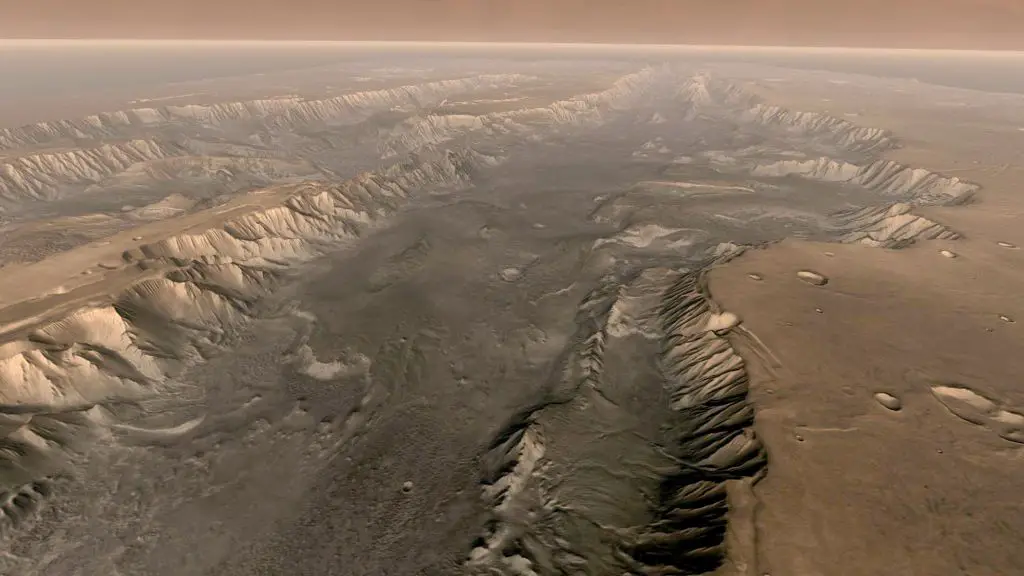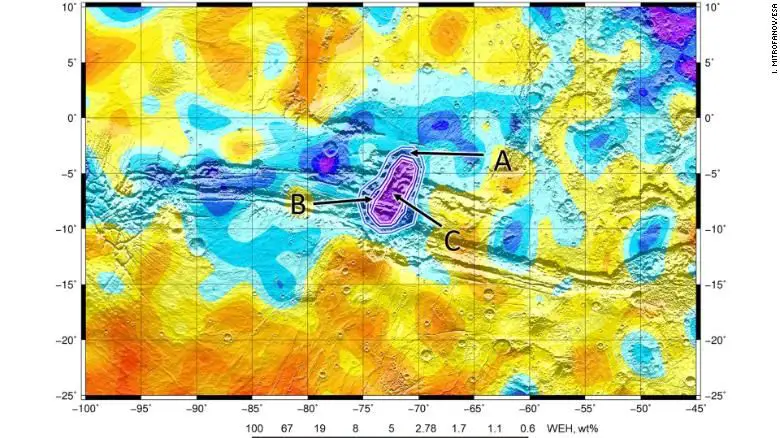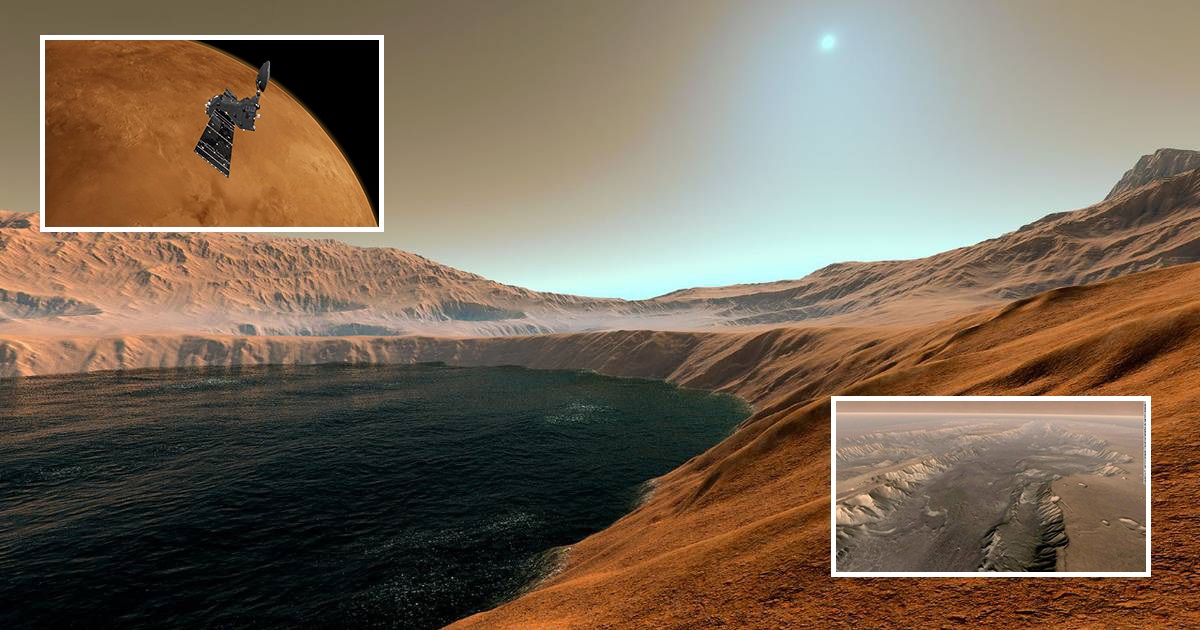According to the European Space Agency (ESA), Mars has its own Grand Canyon (a natural rift produced by continuing erosion in Arizona), and scientists have determined that this impressive feature is home to “huge volumes of water” following a probe circling the Red Planet. The findings were reported in the Icarus journal.
The ExoMars Trace Gas Orbiter (TGO), a joint mission of the European Space Agency (ESA) and Roscosmos, detected water in the Valles Marineris area of Mars in 2016. This canyon system is ten times the length, five times the depth, and twenty times the width of the Grand Canyon.
The Micro-Resolution Neutron Detector discovered the water under the surface of the valley system (FREND). This device can map hydrogen to a depth of roughly a meter under Mars’ surface.
The majority of the water on Mars is found in the polar regions, where it stays frozen.
Valles Marineris is located south of Mars’ “equator,” where temperatures are normally too warm for water ice to form.
Between May 2018 and February 2021, the probe recorded observations. Other spacecraft have previously looked for water close under Mars’ surface and identified modest quantities under Martian dust.
“We can investigate three feet beyond this layer of soil with the Trace Gas Orbiter and observe what is actually going on beneath the surface of Mars — and, most crucially, find ‘oases’.” Igor Mitrofanov, FREND’s principal scientist, stated in a statement that the study was rich in undetected water.
“FREND has identified a location in the huge Valles Marineris Valley system with an abnormally high level of hydrogen: assuming the hydrogen we detect is bonded to water molecules, it seems that up to 40% of the near-surface material in this region is water.”
To give you an idea of scale, this region is about the size of the Netherlands. The Candor Chaos, a network of valleys inside the valley system, intersects with it. The FREND device is hunting for neutrons in Martian soil in order to map the hydrogen concentration.
In a release, research co-author Alexei Malakov, head scientist of the Russian Academy of Sciences’ Space Research Institute, stated, “We can determine how much water is on Earth by looking at the neutrons it produces.”
This is due to the fact that “neutrons are formed when high-energy particles – known as ‘galactic cosmic rays'” hit Mars; drier soils release more neutrons than wetter places, according to the same statement.
“We discovered a key area of Valles Marineris that was completely flooded – much more than we had anticipated.” This is extremely similar to Earth’s permafrost zones, where the ice originates. water Due to the continual low temperatures, it stays permanently stable beneath dry soil.
The team was able to find previously concealed water because of the instrument’s unique monitoring capabilities, according to Malakhov. It might be ice water or water that has been entangled with minerals in the soil. However, experts feel that the occurrence of ice is more plausible due to the lack of water in the minerals at this location.

Because the equator on Mars has greater temperatures, experts believe there may be a unique mix of variables that enable water to survive. [no regional] It is currently being refreshed.
In a statement, research co-author Hkan Svedhem, a former scientist on the orbital project, stated, “This finding is a terrific beginning step, but we need additional observations to know for sure what sort of water we are dealing with.”
“The finding illustrates the TGO sensors’ exceptional capabilities in enabling us to see under Mars’ surface – as well as showing a substantial store of shallow water that is readily exploited in this Martian location.”
Missions to Mars in the future will land in low latitudes. This finding in Valles Marineris underscores the possibility for human exploration of [do lugar] for many years to come, particularly since this water will be considerably more accessible than other previously identified groundwater sources.

The greatest quantities of water discovered by the probe are shown in blue and violet on this map. In a statement, Colin Wilson, Project Scientist at ESA’s ExoMars Trace Gas Orbiter, said, “Knowing more about how and where water is on the planet today is essential to understanding what happened to the planet’s once abundant waters and helps us in our search for habitable environments, potential signs of past life, and organic matter from the start.”
I am 2022, or Rosalind Franklin, rover of Europe. Kazachok, a Russian surface platform, will be launched in 2023 and is scheduled to settle on Mars.
The rover will delve into Mars’ surface for organic compounds with the aim of discovering whether or not the planet has ever supported life. The Oxia Planum, a location of exposed old rock rich in mud that has previously been exposed to water, will be explored by the rover.

